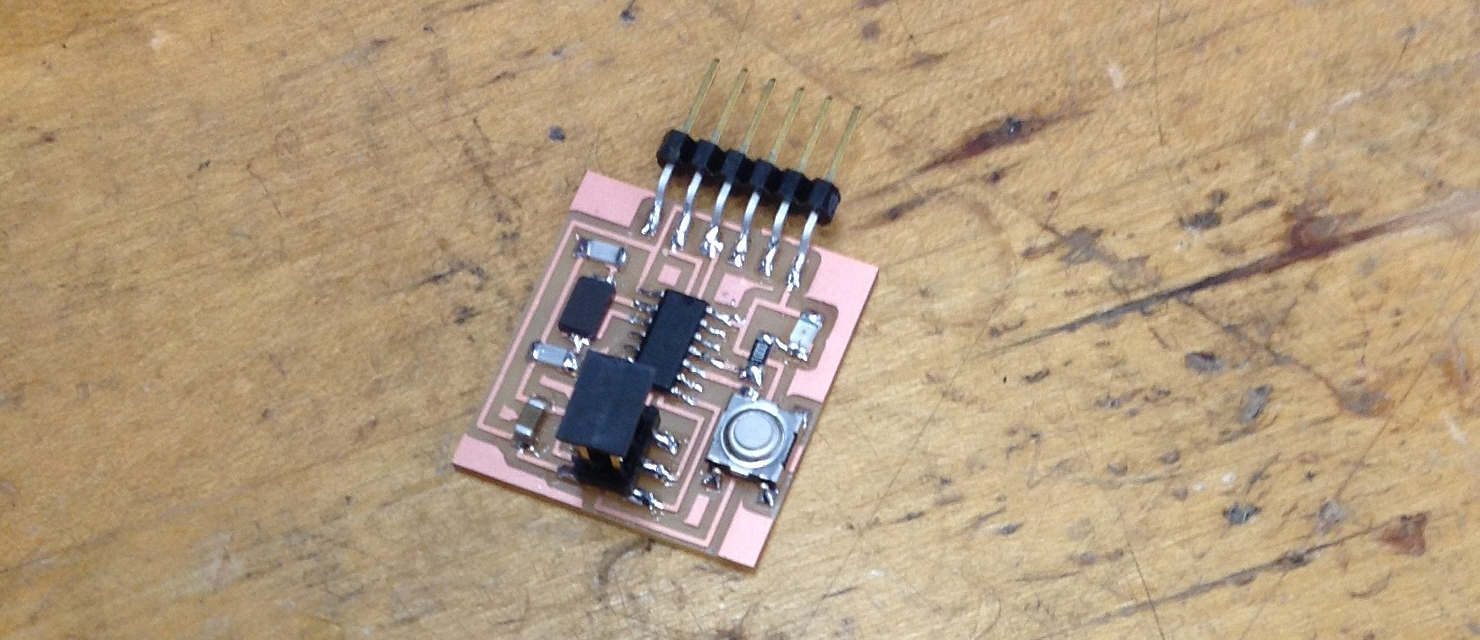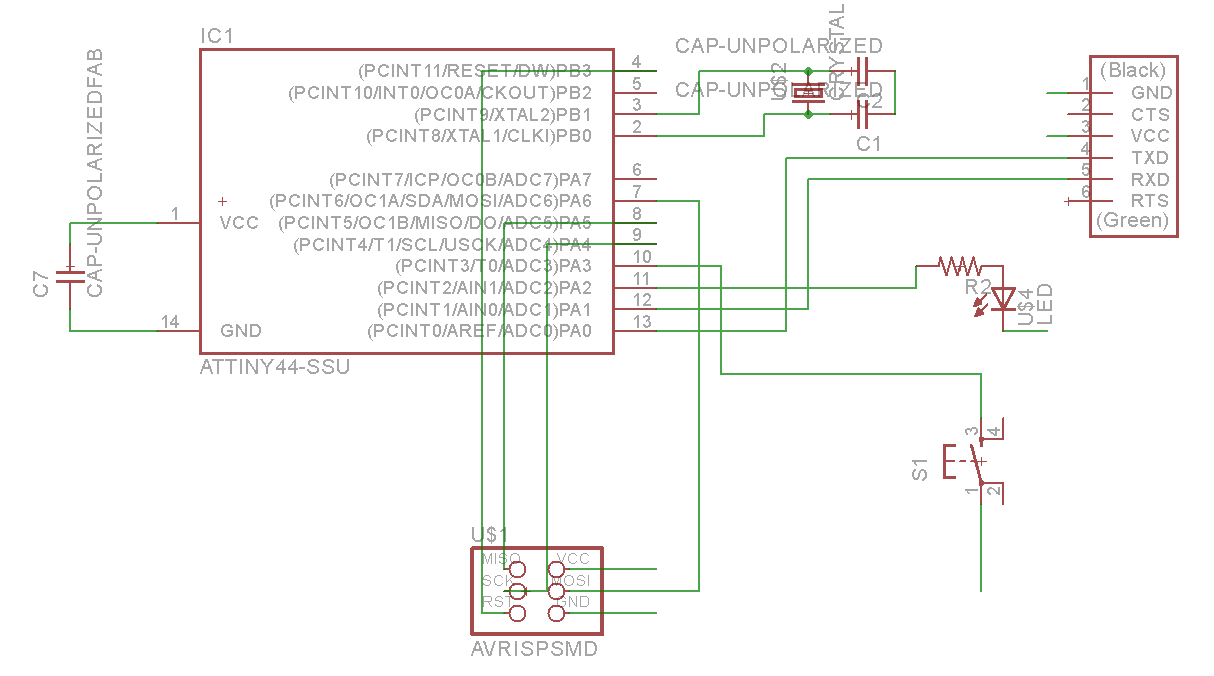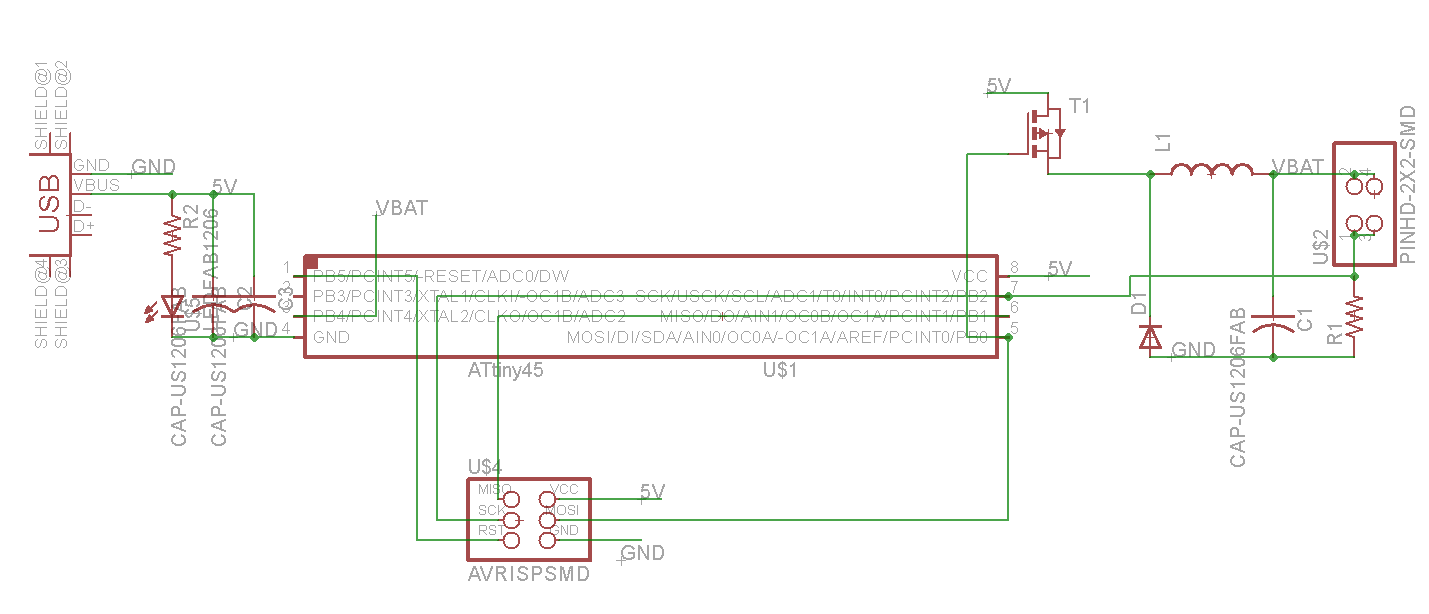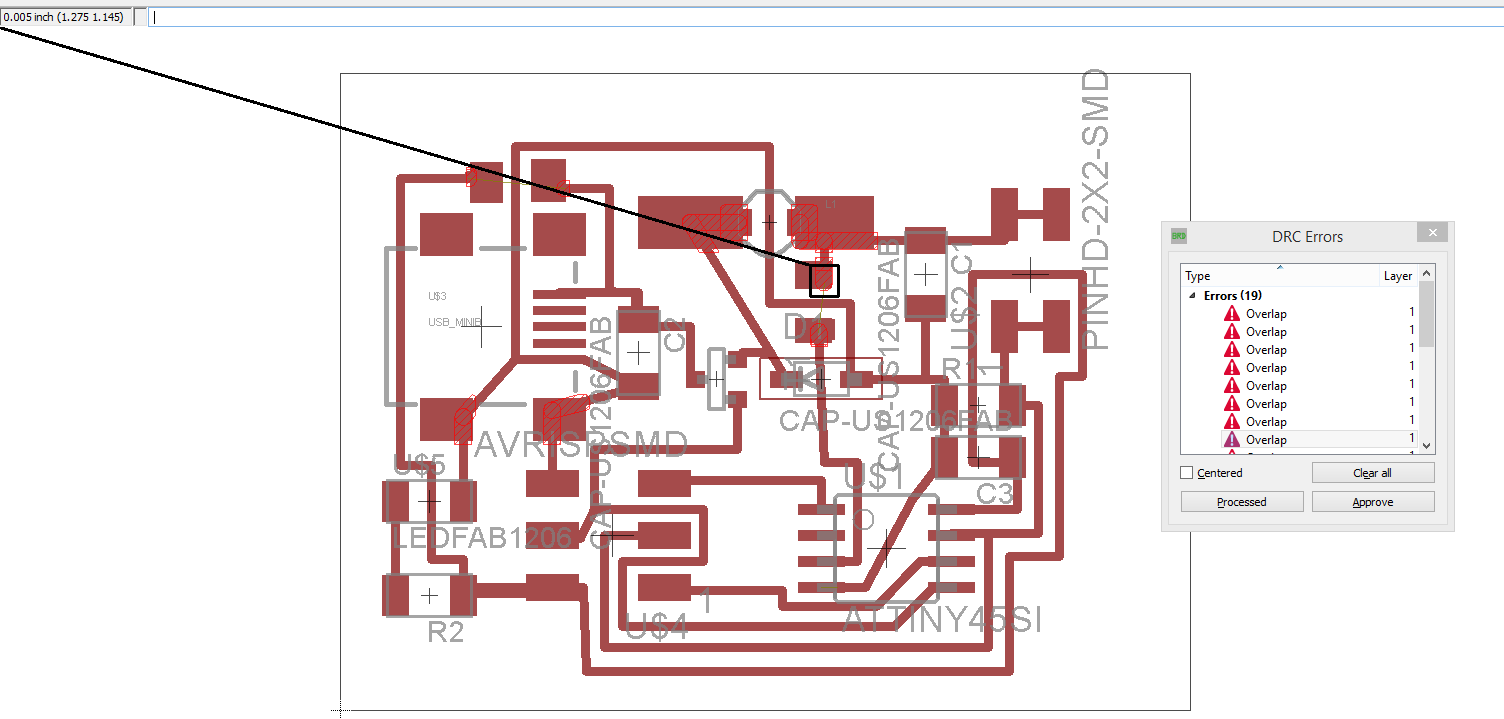Electronics design
This week, we learned Electronic Design Automation (EDA) tools, including Eagle, one of the most commonly-used EDA tools among amateurs because it's free and there's a large online support base. I'd learned to use Eagle before in the Harvard fab lab in order to design a simple board using the ATtiny45, so I was already familiar with the tool.

The finished "Hello World" board: My main success for this week was in designing and milling this board, which will (eventually) be able to turn on an LED when you press the button.
Design workflow

First schematic: This is the original schematic I made for the Hello World board--I've since only changed it to add labels for signals and add supply symbols.
The first step in Eagle is to make a schematic. The system is mostly veyr simple and clear: You choose parts from a list, place them, and put wires between them. Because Eagle is old and the GUI is really poorly designed, the tools don't tell you their names when you mouse-over (unless you wait 10 seconds), and Eagle can't have two tools named the same thing, so the tool for making connections in a schematic is called "net" (instead of the obvious "connect" or "wire").

First board: My first attempt at designing a board was moderately successful. In the end, I had to redo the board outline on another layer (to prevent the outside having an extra line), but got to keep most of the board.

Battery charger schematic: I used an ATtiny45 in a buck topology as a voltage/current regulator to limit the battery charging current/voltage; a sense resistor (maybe 0.1 ohms) senses current while the microcontroller directly senses topside voltage.

Design rules check: My second board for the week, the first attempt to design a Li-Ion battery charger, also went pretty well. There were a couple things that originally failed the DRC, but after fixing those it only complained about my overlapping pads from the mini-USB jack and makeshift pads (for jumpers and unknown inductor pads). I realized that in future I'd need to fix the made-up pads and jumpers, as well as giving the higher-current parts larger traces
As with the schematic tools, Eagle's poorly-named tools were inconvenient in making the board (also, the fact that it lacks simple drawing tools, which would be useful for making boards with any geometric complexity).